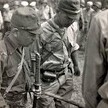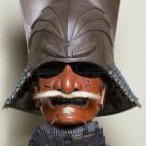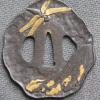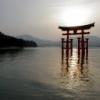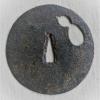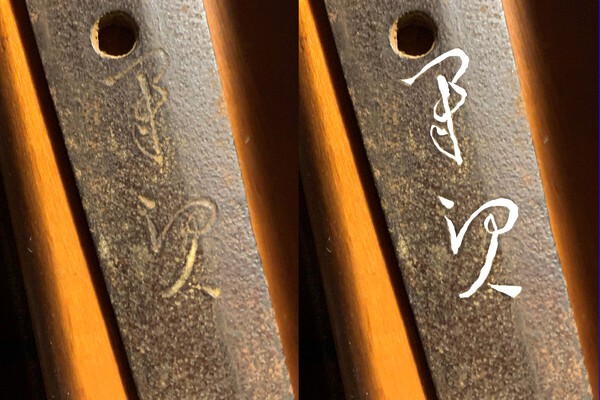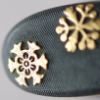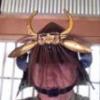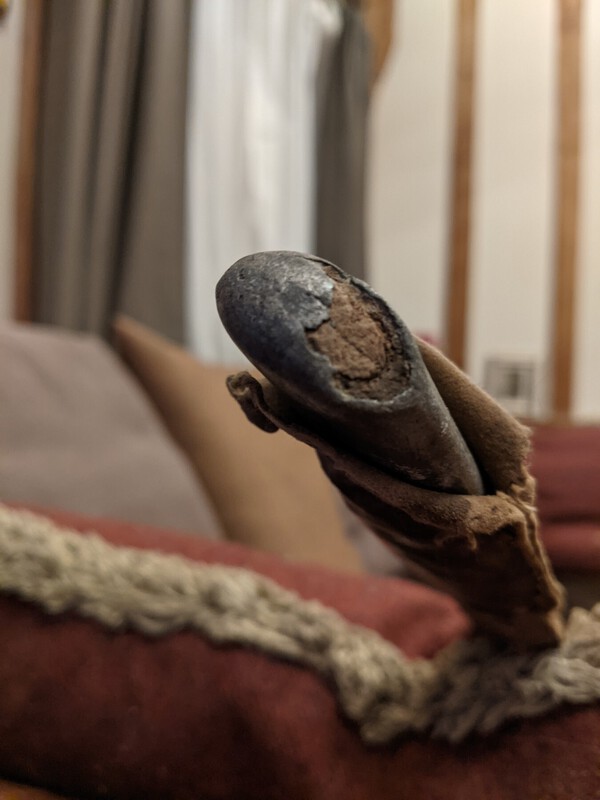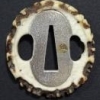Leaderboard
Popular Content
Showing content with the highest reputation on 10/17/2021 in all areas
-
Studies show that the age of female that men find most attractive is 22. The age range of men studied was from 18 to 70 years. Didn't matter the age of the man - age 22 was the most desirable. Men are innately wired to seek signs of youth and fertility in potential mating partners. It's just our nature. When it comes to Japanese swords, however, most of us would take a nice 500 year-old. Lol4 points
-
3 points
-
3 points
-
Seki stamp never meant the sword is a non traditional showa-to. The seki (and sho) stamps originated with a sword making guild in Seki as a marketing/quality control technique after lots of cheap swords were breaking in combat. They starting a quality control program that anyone could submit their blades for an inspection and receive the stamp. Once stamped, it was a sign that the blades were good for combat, so it became popular as a way to insure buyers that the sword was good.3 points
-
I wish they had drew out the blade, saya looked well preserved.2 points
-
2 points
-
Nope, you are wrong guys. This is a dual Russian/Japanese team that has been searching the island since 2014, looking mainly for deceased soldiers. They then arrange for them to be id'd and repatriated. This isn't just one of the usual artifact digs. These guys are mainly searching for lost soldiers. They document everything intensively. I follow another guy in Russia who digs for artifacts and when remains are found, they are dealt with properly and respectfully.2 points
-
Well, Curran, I got so upset about a scammer that I went to https://pages.ebay.com/securitycenter/report_concern.html & reported the guy there. Don't know if I was the cause, but I never saw another post by the idiot.2 points
-
Geoff, I'd never thought about it, but I've been married twice, & both brides were 22. First one lasted a decade, & I just had our 43rd anniversary with number 2!2 points
-
2 points
-
2 points
-
2 points
-
Dear Old Friend, Stephen, ... UPS is VERY expensive in Canada. Hell EVERYTHING is expensive in Canada. Our Postal System is on the rocks, our Medical System is on the rocks, our Transportation System is on the rocks, our Governments ( Federal, Provincial, and Municipal ) are on the rocks ( and have been for years ), our IMMIGRATION System is on the rocks, our Education System is on the rocks ( although still better than American ), our Currency is on the rocks, our Climate is on the rocks, my Sex Life is ( almost on the rocks ... I am 74, so I have an excuse ). Our Judicial System is on the rocks. One can trace ALL this trouble back to one common denominator ( BUREAUCRATS .. paper pushers who produce nothing, and whose sole purpose in life is to make someone else's life DIFFICULT !2 points
-
I found a 98 gunto (?) at an estate sale. After reading posts on this forum I think this was worn by a civilian employed by the Army. There is no tassel and there is no ring for one on the small plain kashira. I doubt that the blade is hand forged but it is dirty and I am not absolutely sure. There are two mounting holes on the tang but the handle only had one makugi and no other holes for another one. Could this be due to a production blade that left an option for a second makugi that was just not utilized? The blade length is 69 cm and it is sharpened to the ha-machi. The saya is leather over wood with an unusual fine diagonal black grain. It has clearly been through the bush based on the gradient of scuffing from kojiri to koigichi. The ito has darkened areas and wear around the sitesone would grip it. There are two menuki, one is a fat smiling Buddha sipping from a large bowl and the other is not so clear though there is a simple sun in the middle. The tsuba appears to be brass with identical ocean waves on front and back. I am looking for the deceased owner's service record to see if he actually fought in the Pacific and where. I think this is the real deal based on very authentic artifacts of various sorts in the estate sale. Here is a photo of the tang and a photoshopped enhancement of the markings. I would very grateful if someone can help with their identification.1 point
-
Looks like 明暦四年二月日 - Meireki yon nen ni gatsu hi - a day in February, 16581 point
-
1 point
-
1 point
-
Tom, more photos would be helpful. Seems clearly to be an older blade. Not a WWII-era 20th century showato/arsenal sword. The mei appears to be ___tsugu. I cannot read the first character. Please add additional photos here for reference. As an older blade, additional mekugi-ana not present in the handle are not surprising.1 point
-
1 point
-
Ron although we were not able to do any business ( I was always to late ) I appreciated looking at all your sale items and reading your write ups. In the collecting world, for those interested and dedicated, with age comes wisdom. Time spent enjoying and studying leads to knowledge. Being able to examine examples of our interest over many years gives us a advantage the new/younger ones may never have. Books are a necessity and the new electronic world is invaluable, but being able to hold the items of interest in your have is the best learning experience. All of this comes with time and as time goes by we all age. Not all of us become smarter with age, but for those who do enjoy and retain the things that they have been lucky enough to have had that chance to hold, they are the truly lucky ones. Glad you posted here and good luck with your future where ever it leads you. Thank you for sharing MikeR1 point
-
..https://www.the-saleroom.com/en-gb/search-tsuba#lot-268e4e13-35b5-4e35-8ad5-adb700e63f6f BEST1 point
-
Thanks John. It's funny how some paper to Higo, others to Hayashi. Yet they look nearly identical. Well, I am happy with mine, considering the one you just found is nearly 5 times as costly!1 point
-
The additional information that the fuchi has a minogame clinches the identification of the bird on the kashira as a Crane (instead of a Night Heron). Research the symbols of longevity and you will be convinced too (there are 4 main symbols: pine, bamboo, crane & minogame).1 point
-
1 point
-
Don't overthink it too much. These were essentially mass production of handmade items, I don't think they thought all that much about each dot. On most fittings I've seen, those "comb shaped" objects just represent rocks or stones on the ground. The minogame appears to be climbing out of the sea onto land, so expect rocks, trees, leaves etc.1 point
-
Bruno, Do you have a source for that? If so, I would find that significant to have. In my digging, the only known source I could find was the Seki City website. The Seki City website claimed “all” blades were tested and stamped, lending support to the opinion by some collectors that their particular blades are gendaito, regardless of the stamps’ presence. But the website article was referring to showato and the impact “poor showato” were having on the industry. So, it is still possible the testing and stamping was only done on showato. In fact Ohmura, citing the number of Cutlery Assoc. inspected swords, states that traditionally made swords were not part of that tally because they weren’t inspected. Since half of the blades in each survey had no stamps at all, many of them from the Seki prefecture, this could indicate they were gendaito, while the stamped blades were showato. But your version still could be true. Here's the original discussion with Nick Komiya: "First, is what the Seki City site says about its cutlery industry in WW2. They have a long chronology chart of Seki City history and I provide the full translation of the first boxed section from the original below. 'Blade Manufacturing as Part of the Armament Industry Because the United States and England adopted China-assisting policies in the early years of Showa, Japanese products were driven out of world markets, shutting off Japan’s exports. Thus the mainstay exports of Seki’s cutlery industry such as knives, dishes and kitchen knives took a huge hit and those producers were transformed into suppliers for the military. During the war, Seki’s entire cutlery industry got drawn into supplying the military, and sword-smithery was once again a thriving industry. In those days, military swords were called Showa-toh to differentiate them from traditional Japanese swords, but as demand grew, bad quality Showa-toh appeared on the market, becoming a social problem. To counter this problem, the sword dealers of Seki devised a program to assure quality by having the Seki Cutlery Manufacturing Industry Association test all newly produced Japanese swords and stamped products that passed this test. This quality assurance program, combined with the trainee program at the forge and efficiency improvements coming from specialization and job-splitting of the production process, allowed Seki swords to gain the reputation of being affordable yet high quality, leading to a 90% share of Japan’s entire market supply. The sword industry of Seki in 1944 consisted of 49 smiths of traditional swords, 200 smiths of Showa-toh and 3,000 Polishers.' Secondly, although the Ohmura site claims that the Sekiwake 関分 plant under the Nagoya Arsenal adopted the Seki stamp as their acceptance stamp, the code list from 1943 below attributes it to the Seki Supervisory Group of the Nagoya Arsenal, one of a total of 10 acceptance outposts of the Nagoya Arsenal. Note also that "Na" in Katakana was from the Iwahana Plant under the 2nd Tokyo Arsenal and it was the Kanji version that stood for the Supervisory Dept. of the Nagoya Arsenal. 関分 is clearly another mistake. It is clear from the Seki City write-up that it was the non-traditional Showa-toh that invited the quality test and stamping and the later Sho in cherry blossom is obviously in direct reference to the distinction, "Showa-toh". I cannot imagine why he had to tie it to the Ministry of the Interior. Traditionally made Nihonto made by the 49 smiths were not called Showa-toh. The site says "All newly made Japanese swords got tested", as if testing was not limited to Showa-toh that ruined the reputation earlier. The Seki City History book consisting of more than a thousand pages will surely have more details. I just secured a cheap second hand copy of the 1999 issue, so in a few months, I should have a few more facts for you to chew on." Source Link So, as you can see, we still need more information.1 point
-
1 point
-
Hey Bruce ive just read the links about the type 3 Rinji Seishiki that you share!!! A lot of info!!! Very interesting! Thanks for sharing this!!! Eric1 point
-
If defenestration (throwing him out a window) doesn't work, you can fenestrate him with a tanto (definition #2): fen·es·tra·tion /ˌfenəˈstrāSHən/ Learn to pronounce noun ARCHITECTURE the arrangement of windows and doors on the elevations of a building. BOTANY•ZOOLOGY the condition of being fenestrate. MEDICINE a surgical operation in which a new opening is formed, especially in the bony labyrinth of the inner ear to treat certain types of deafness.1 point
-
Item No. 133 Three ' orphan ' fuchi one in shakudo , the other two in shibuichi. 133a - Garden lantern and pine tree in relief , signed Hamano Yasuyuki 133b - Clouds with demons , signed Nomora Masamitsu with kao 133c - Stream and reeds , signed Sekienshi Tsuchiya Yasuchika Provenence - Lundgren Collection nos. 222 , 243 and 257 respectively Purchased some two and a half years ago at auction.1 point
-
Well, they screwed Dale’s on upside down. All the 大吉 luck would have poured out, like an upside down horseshoe.1 point
-
1 point
-
1 point
-
Hugh cant take a joke? My son say im too picky in looking at women, chides me wanting younger i say 44s not young...better than wanting two 22 yerold.1 point
-
That is offtopic and not part of this discussion. Before aynthing is sent for polishing it first needs to be determined if it is worth teh effort. Gimei or Mumei Muromachi hardly is1 point
-
Simon, I think that is overly harsh. I for one welcome the new organization. I won't let the "antics" of one member cloud my judgement. Let's give them a chance, it's all about education.1 point
-
Curran: The "Tiffany Tragedy" http://www.thehistoryblog.com/archives/59036 I cleaned and enhance the image - [jeez, I hate how dark photos are published] Even the fire tools are made of tsuba as well as hanging lights. Stephen - have you been hacking into my 'WATCH LIST"? https://www.jauce.com/auction/d10124783430 points
-
Kenny its hard to say, when i was 36 i married a 18 yer old. Of course it was a total disaster but she was so adept at playing the piccolo ... I ah won't go there. 😉0 points
-
Ah, Ken, ... alas I have no daughters and if I did they would be approaching 50 years of age ( once a female is past 20 years of age, ... I consider them " over the hill " ). ... Anonymouse-1 points
This leaderboard is set to Johannesburg/GMT+02:00



